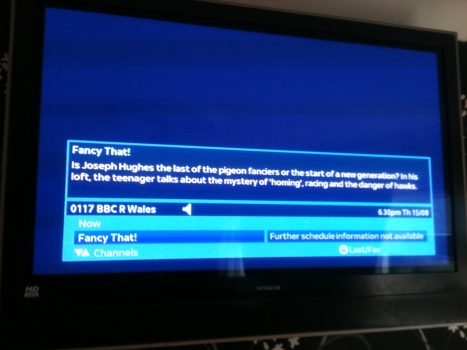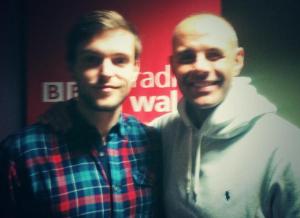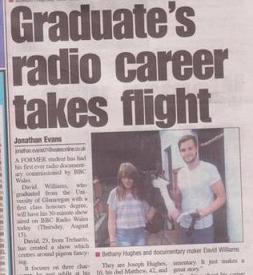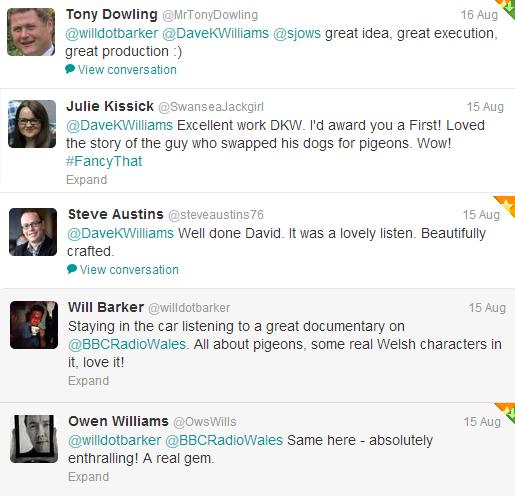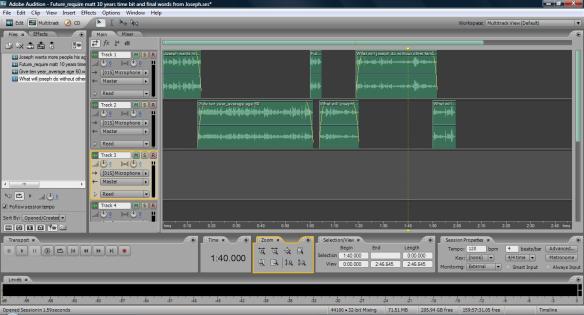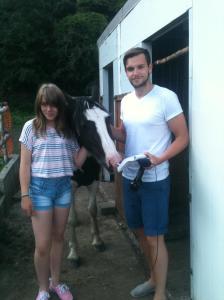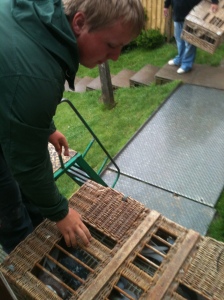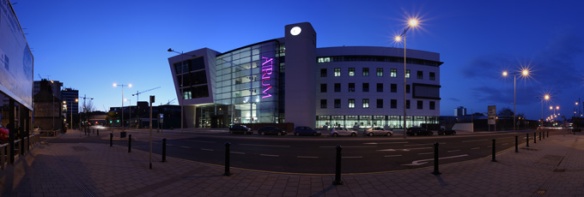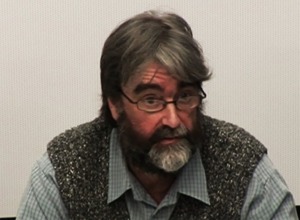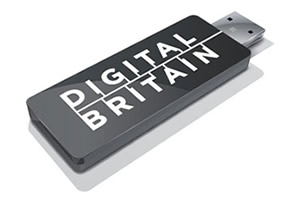Technology is constantly changing and progressing and because of this the Internet has been able to develop and flourish to the point where over 30% of the world’s population have access to it (Internet World Stats, 2011). A tool with such a large reach is extremely rare and the potential it held for different types of media were quickly seized upon.
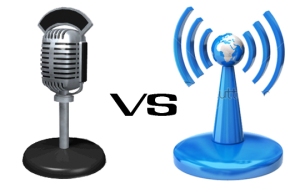
Radio is a medium that has had to constantly adapt and evolve over its existence due to inventions and technological developments such as television. Today, it is the Internet that provides the radio industry with its latest challenge. There are also positives to this technological development however, as ‘the merging’ of radio and the Internet presents the industry with ‘many opportunities’ (FAOUN, 2007: 112).
Since the late 1990’s the amount of radio stations streaming online and Internet-based radio stations has ‘grown tremendously’. Now the Internet is a one of the most important platforms ‘for radio broadcasters to provide audio content, both live and on-demand’ (EBU, 2010: 5). However, the Internet is not just used by broadcasters as a one-way device. The growth of social media sites like ‘Facebook’ and ‘Twitter’ have also had a large impact on the way the medium is consumed and the relationship between the radio broadcaster and its listener.
However, long before the rise of social media, the Internet was having a significant effect on the radio industry and its audience. Internet-based radio stations were set up as eager broadcasters seized the chance to transmit content that was free from ‘the economic and legal restraints that limit what is on the airwaves’ (Heberlein, 2002: 12). Chan-Olmsted also sees the freedom brought about by Internet radio and its ability to create ‘more varied and personal’ programming to attract ‘niche audio segments’ (2008: 98).

The way we receive the Internet since its conception has also improved vastly improved. Dial-up, with its slow speeds and unreliable connections has been replaced by faster, more reliable broadband connections. This means that many people can get a good quality radio stream on their computer just as quickly as they could turn on their radio sets. This may be one of the factors which has lead to ‘stream measurements from key broadcasters such as the BBC’ showing a ‘steady growth in listening to radio over the Internet’ (EBU, 2010: 10).
Though the amount of people listening to internet-based radio and broadcast radio via the internet has shown a ‘steady growth’ it is still important to note it is currently the least popular way of consuming radio in Britain. In the RAJAR third quarter report DAB and Digital television remain the most popular methods of listening, but it also shows that hours listened through the Internet in Britain saw not just a ‘steady growth’ but the largest growth of any platform as it rose 30% since the second quarter (2011).
With the many positives the Internet has brought to the radio industry, it has also brought about a number of negative aspects, one being that it has given potential radio listeners the ability to access almost any piece of music on demand. Breeding (2004: 33) highlights the listeners’ lack of musical influence and control on ‘traditional radio’ by pointing out that the audience ‘have the option of calling in a song request’ or other forms of communication but this relies on the show being live or the DJ reviewing requests ‘which is often not the case’.
Today audiences expect to have a great amount of control over the content they consume, whether it’s what song a station plays next or who get’s voted off a reality show on a Saturday night. Traditional radio is unable to provide music on demand to the masses and that is why a many people are turning to online music services to hear the music they want. A report by the European Broadcasting Union (2010: 10) shows that ‘the biggest growth in streaming audio is due to interactive music services such as Spotify in Europe and Pandora in the USA’.

A Spotify Radio prototype
These services legally provide an almost endless catalogue of music that is accessible at an instant. The Scandinavian music service Spotify has a radio function where you are able to give it information about your musical likes and dislike so that it can cater to your tastes. Despite this ability to create a personalised radio station, in a survey undertaken by 100 Spotify users, only 9 of them use the radio function while the other 91 participants solely use it to create playlists (Heimer, 2010: 35).
When radio broadcasting first began in the early 20th century, radio sets were extremely large, heavy pieces of equipment which were kept in the home. This meant when you left the home, you also left the radio. This was the case up until Bell Laboratories created the transistor in the 1940’s. The transistor ‘became a replacement for the vacuum tube in radio devices’ as they were far lighter, less fragile and less bulky. This made it possible to create radio sets that were ‘lightweight’ and ‘could be carried virtually anywhere’ (Turow, 2011: 336).
Today, radio devices are more compact than ever and a listener need never miss their favourite programme. The majority of mobile phone handsets available are capable of receiving a FM frequency so there’s not even a need to carry a designated radio device any more. The method seems to be popular amongst the younger audience as figures from a UK wide survey show that one in four people aged under 24 listens to the radio via a mobile phone’ (Chantler, Stewart, 2009: 7).
However, whereas a number of years ago mobile phones were only able to receive a FM radio frequency through an aerial, the development of web-enable mobiles and smartphones have given the audience far greater choice. Chantler and Stewart note that ‘mobiles with internet ability, such as an iPhone’ allows the owner to listen to almost every station that broadcasts over the Internet, meaning they have far more access to stations and are not constrained to FM-only stations (2009: 7).
Traditional radio broadcasters can do many things to help widen their reach but very little compares to putting content on the internet. The ability to distribute content to those who are not within range of a certain station is one of the main impacts of the Internet on the radio industry. Biagi recognises this aspect to the Internet as he highlights the ‘unlimited possibilities for radio to be distributed free beyond the bounds of a local radio audience’ (2010: 128). Chan-Olmsted also sees the positives gained from the ‘unlimited geographical reach’ that the Internet provides while also pointing out that it provides opportunities ‘for the radio industry to boost its competitiveness in the increasingly crowded media marketplace’ (2008: 98).
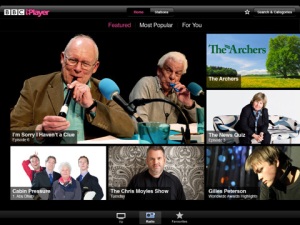
In order to get their content online, radio broadcasters can create designated websites that can host any material they wish to distribute. The prime example of this is the BBC’s iPlayer (BBC, 2011) which launched on Christmas Day in 2007. The service allows its users to not just ‘watch the last seven days of BBC TV’ but also access the last seven days of radio programming. The service became a massive success within its first few months and at one point ‘accounted for 5% of the UK’s total internet traffic’ (Else, 2008: 58).
Goddard (2010: 144) also acknowledges the BBC’s ‘commanding position in terms of its share of listening via the internet platform’ and attributes the success not just to the ability to ‘listen again’ but also to the integration of the live BBC streams that can be accessed through the service. This put the BBC in a commanding position in the battle for digital listeners as commercial stations were unable to finance similar services. However, in 2011 Radioplayer was launched which allows internet users to listen to all UK radio stations.
Podcasting is another way the Internet has impacted the way we consume radio. Although we have found that the ‘listen again’ services are extremely successful, Farkas (2006) is of the opinion that podcasting will have the greatest effect on ‘traditional radio’. One of the features of podcasting is its diversity; there are hundreds of thousands, possibly millions, of podcasts available ‘covering topics such as news, technology, comedy, popular television programs, politics’ (Ferrell, Hartline, 2007: 293).
Geoghegan and Klass argue that creating podcasts as opposed to broadcasting on the airwaves has the one major advantage of allowing podcasters to ‘reach a more geographically diverse audience than a radio station with the most powerful AM/FM transmitter in the world’ (2005: 2). However, due to this ability ‘It did not take long for mainstream media to realise that they could turn their products into podcasts’. In 2010, it was estimated that 57% of commercial radio stations created their own podcasts, a figure that has no doubt increased over the last 12 months or so (Fleming, 2010: 58-59).

Though Farkas, Geoghegan and Klass see podcasting as a threat to traditional radio, Fleming sees the positives that come from the rise in numbers of people and broadcasters creating podcasts. She claims ‘the way radio has developed in the UK shows that one of its strengths is its ability to adapt to changing technology… podcasting has allowed the medium to reinvent itself so that it still has relevance to its users’ (2010: 59). The ‘users’ of radio today are now used to having content as and when they want it and Cangialosi et al (2008: 404) argue that the reason for the success of podcasting is because it’s ‘a natural fit for on-demand culture’.
One of the main reasons radio stations are so eager to create podcasts is to target the ‘highly sought-after younger demographic of 18 to 24 year olds’, an audience segment where podcasting is extremely popular (Ferrell, Hartline, 2007: 293). However, this is not the only way radio stations use the Internet to target a younger audience.
Social media has ‘rocketed to the top of the marketer’s tool kit’ (Keith, 2010: 214) in the radio industry over the past number of years, especially for those ‘radio services targeting youth audiences’ (EBU, 2010: 7). Ferrell and Hartline described the younger demographic as ‘highly sought after’ and it is through social media sites, such as Facebook and Twitter, that these potential listeners are being targeted. The power of social media in radio is made clear in an EBU survey which revealed that 70% of radio stations who took part ‘offer participation and/or information through external social media sites’ (2010: 5).
In the EBU report, it highlights the fact that ‘Listeners, particularly the younger generations, are increasingly accessing radio via social network sites such as Facebook, MySpace, Twitter and YouTube’ (2010: 9). Of course, social media isn’t exclusive to those under 24. Though Šmahel and Subrahmanyam (2010: 6) highlight that social networking sites are used more ‘extensively … among youth’, studies and surveys show that the fastest growing segment on Facebook is ‘women older than age 55 and the largest demographic on twitter is the 35-49 age group’ (Turner, Shah, 2011: 14). Though it is also worth noting that research shows older users, especially those aged 55 or older, use social media sites ‘simply to stay in touch with family and friends’ (Wollan et al, 2011: 55).
Social media hasn’t just impacted by what means we listen to radio; it’s also had a massive impact on the relationship between the listener and the broadcaster. Keith (2010: 103) claims that ‘Traditional radio is a one-way medium’ and for decades this was true; the best forms of communication were through posting letters or phoning the station, both methods often fruitless.
Now, social media has aided the relationship between listener and broadcaster to become much more of a two-way line of communication. This is because social media allows the audience to transform themselves from ‘isolated individuals’ into a large mass with a singular voice (Vipond, 2011: 93). Keith (2010: 214) believes the ability for the audience to have a say in the content that a station produces is the ‘basis for successful social media marketing’. He goes on to say that the key to social media success is ‘allowing your consumers or the community to control part, or all, of the message instead of forcing or broadcasting what you believe the message should be’.
This increase in interaction does not just benefit the audience. According to the EBU report, it ‘is one of the most important success factors for youth programmes’ (2010: 8) and is therefore a tool for radio stations to try and maximise their audience. As well as trying to garner larger audiences, the increase in interaction between listeners on social media sites can ‘become a source of content’ for a station (Geller, 2011: 318). Radio stations can see what the ‘hot topic’ among their listeners is, find out what listeners ‘like’ and focus on what material is published ‘by listeners/fans/followers’ in order to tap into the listeners ‘collective mind’ (EBU, 2010: 7).
Its ability to utilise new technological tools is one of the reasons that radio has not just survived but maintained its popularity over its existence. Its transformation from large, cumbersome valve sets to the lightweight transistor systems and then its integration with other devices such as the mobile phone has allowed it to remain a fixture in everyday life. However, it’s the radio industry’s relatively new found relationship with the Internet that has brought the medium into the 21st century. The opportunities it provides, such as hosting audio content, increasing geographical reach and increasing interaction with audiences through social media have been grasped with both hands.
However, though the Internet has brought about many positive aspects to the radio industry, there are those who believe it may eventually have a detrimental effect on the medium. Biagi believes that the Internet has brought about so many opportunities for people to create ‘radio’ such as podcasts and setting up Internet-based stations that the industry may become overly competitive. Biagi looks at the history of radio and its previous threats and competitors and he concludes: ‘In the 1930s, radio learned how to cope with newspapers. In the 1950s, radio learned to compete with television. Today the radio industry must learn how to compete with itself’ (2010: 128).
 The programme goes out every weekday at 10am – 1pm so early starts are required; 7am starts to be exact. This was one of the toughest aspects of the week as my body clock wasn’t ready for such a drastic change but I got through it with the prospect of making radio enough to prise me from my bed.
The programme goes out every weekday at 10am – 1pm so early starts are required; 7am starts to be exact. This was one of the toughest aspects of the week as my body clock wasn’t ready for such a drastic change but I got through it with the prospect of making radio enough to prise me from my bed.
